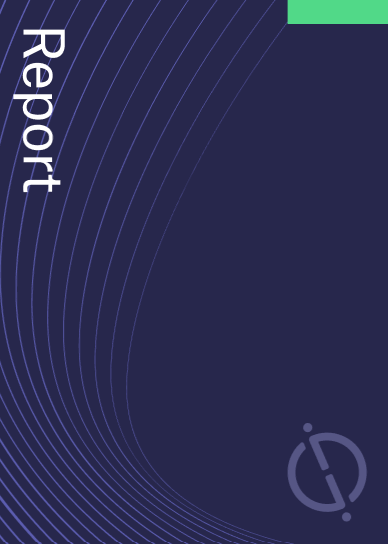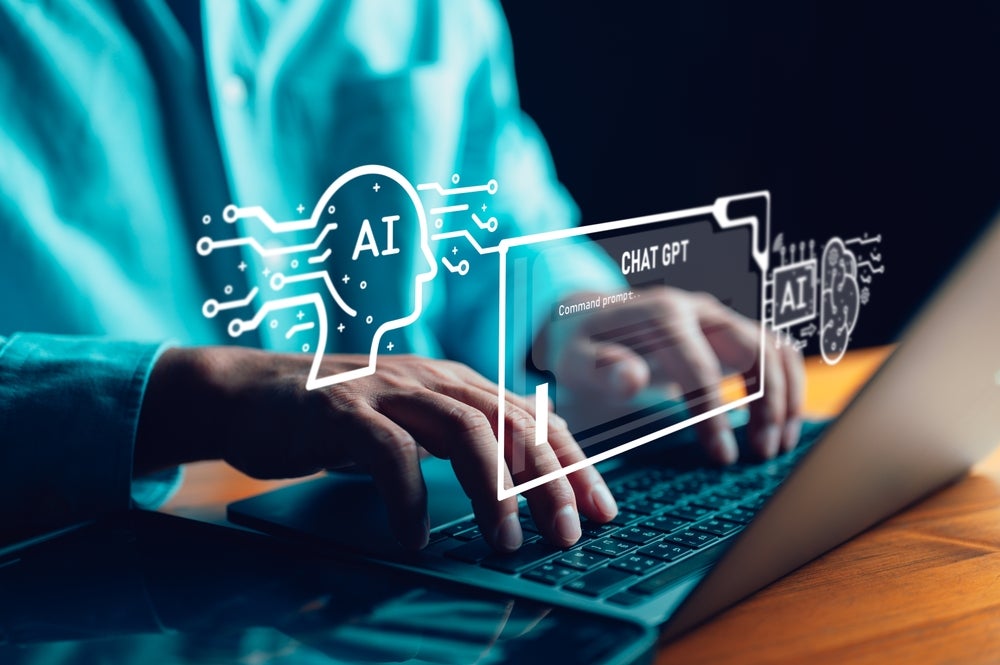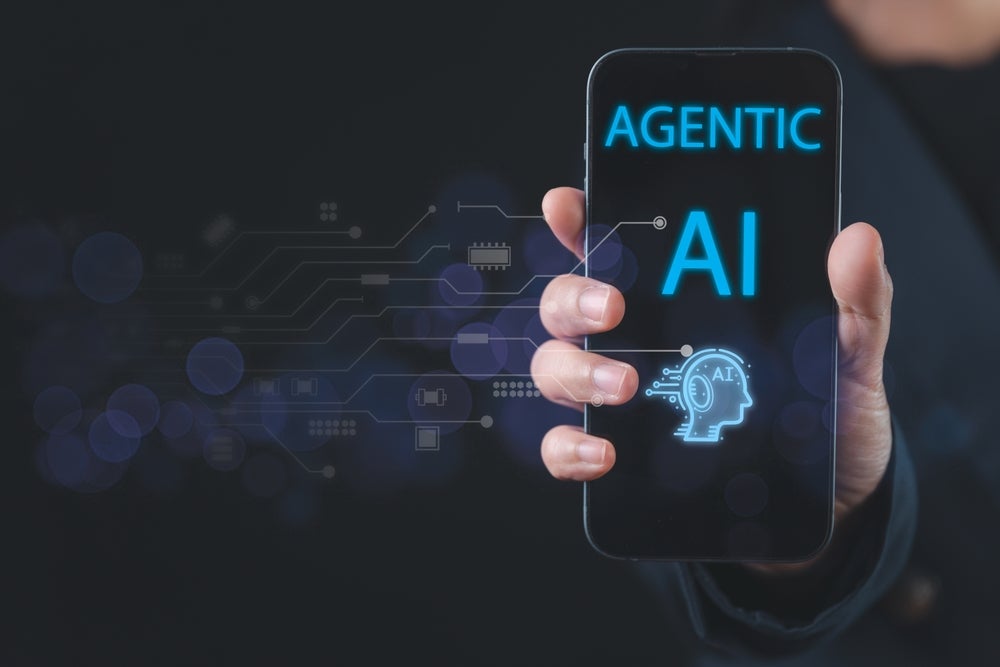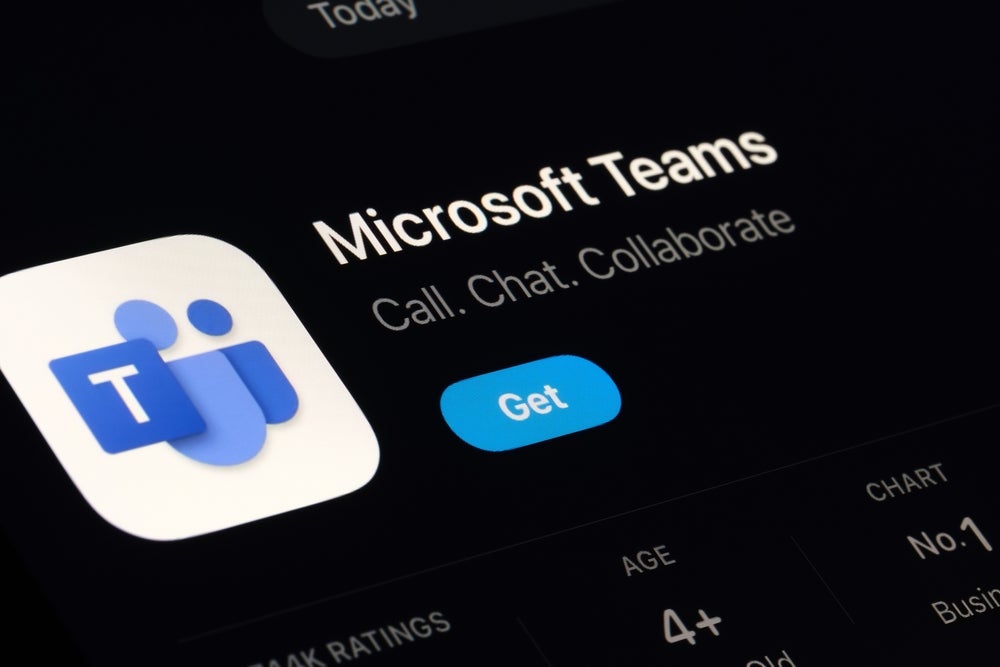The technology industry continues to be a hotbed of innovation, with activity driven by factors such as the increasing need for data integrity, compliance with regulatory requirements, and the growing adoption of blockchain technology as well as growing importance of technologies such as cryptographic hash functions, public key infrastructure (PKI), and blockchain-based timestamping protocols. These technologies ensure the immutability and traceability of timestamps, providing a reliable and tamper-proof record of digital events. As organisations seek enhanced data integrity and security, cybersecurity innovation in trusted timestamping plays a crucial role in ensuring the verifiability and authenticity of digital information. In the last three years alone, there have been over 3.6 million patents filed and granted in the technology industry, according to GlobalData’s report on Innovation in Cybersecurity: Trusted timestamping. Buy the report here.

Access deeper industry intelligence
Experience unmatched clarity with a single platform that combines unique data, AI, and human expertise.
However, not all innovations are equal and nor do they follow a constant upward trend. Instead, their evolution takes the form of an S-shaped curve that reflects their typical lifecycle from early emergence to accelerating adoption, before finally stabilising and reaching maturity.
Identifying where a particular innovation is on this journey, especially those that are in the emerging and accelerating stages, is essential for understanding their current level of adoption and the likely future trajectory and impact they will have.
300+ innovations will shape the technology industry
According to GlobalData’s Technology Foresights, which plots the S-curve for the technology industry using innovation intensity models built on over 2.5 million patents, there are 300+ innovation areas that will shape the future of the industry.
Within the emerging innovation stage, byzantine fault tolerant blockchain, secure multi-party computing, and decentralised identity framework are disruptive technologies that are in the early stages of application and should be tracked closely. Secure hash algorithms (SHA), zero knowledge proof, and private blockchains are some of the accelerating innovation areas, where adoption has been steadily increasing. Among maturing innovation areas are, firmware security, multimedia signal encryption, and biometric authentication, which are now well established in the industry.
Innovation S-curve for cybersecurity in the technology industry
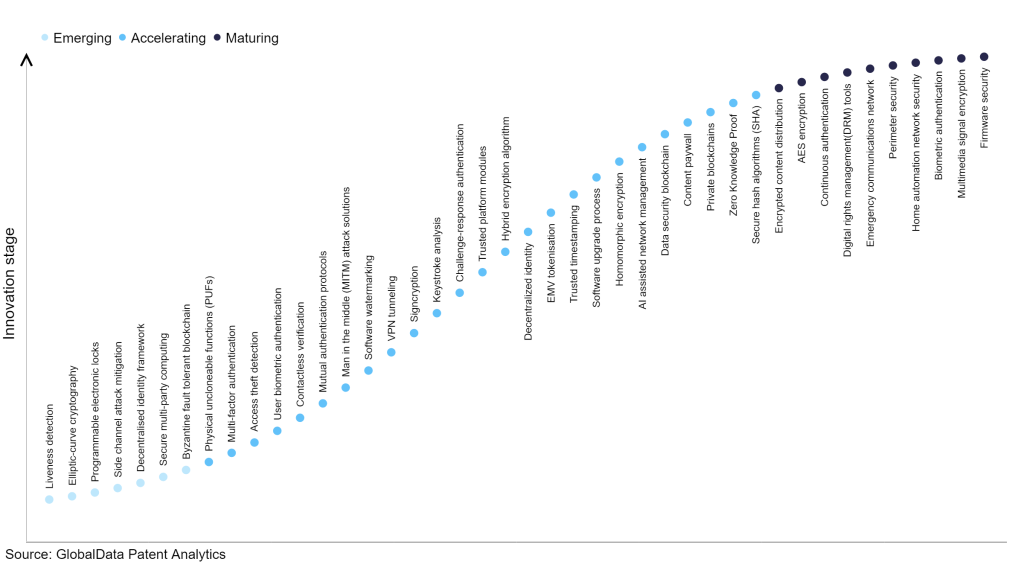
Trusted timestamping is a key innovation area in cybersecurity
Trusted timestamping involves the application of timestamps to digital documents or records, providing evidence of their existence at a specific moment in time. The process guarantees the integrity of the document, ensuring that no modifications have been made since the timestamp was applied. The timestamp is accompanied by a cryptographic signature, which enables future verification of its authenticity and integrity.
GlobalData’s analysis also uncovers the companies at the forefront of each innovation area and assesses the potential reach and impact of their patenting activity across different applications and geographies. According to GlobalData, there are 370 companies, spanning technology vendors, established technology companies, and up-and-coming start-ups engaged in the development and application of trusted timestamping.
Key players in trusted timestamping – a disruptive innovation in the technology industry
‘Application diversity’ measures the number of different applications identified for each relevant patent and broadly splits companies into either ‘niche’ or ‘diversified’ innovators.
‘Geographic reach’ refers to the number of different countries each relevant patent is registered in and reflects the breadth of geographic application intended, ranging from ‘global’ to ‘local’.
SoftBank Group is a leading patent filer in trusted timestamping. One of the company’s patents focuses on a method, apparatus, and system for conducting a security check. The method involves receiving a security verification request from a terminal, obtaining verification element information, generating a unique identifier, sending it to the terminal, receiving verification element information from the terminal, and if the information is consistent, sending a pass notification for the security check to the terminal.
Other prominent patent filers in the space include International Business Machines (IBM) and Microsoft.
By geographic reach, SS&C Technologies Holdings leads the pack, followed by ICTK and Authentify. In terms of application diversity, Nio holds the top position, followed by VeriFone and Texas Instruments.
Cybersecurity innovation in trusted timestamping has revolutionised the way digital documents and transactions are securely recorded and validated. Trusted timestamping provides irrefutable proof of the existence and integrity of digital data at a specific point in time.
To further understand how cybersecurity is disrupting the technology industry, access GlobalData’s latest thematic research report on Cybersecurity – Thematic Research.
Data Insights
From

The gold standard of business intelligence.
Blending expert knowledge with cutting-edge technology, GlobalData’s unrivalled proprietary data will enable you to decode what’s happening in your market. You can make better informed decisions and gain a future-proof advantage over your competitors.


